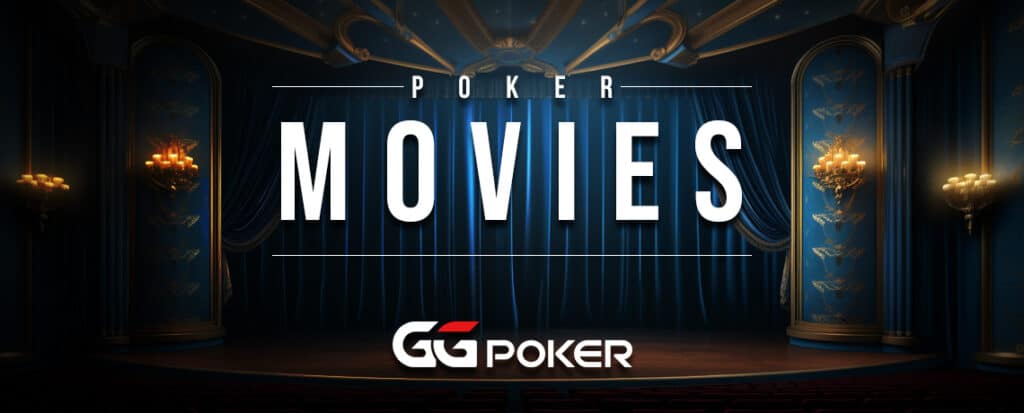Poker Movies and Pop Culture

In the world of entertainment, poker movies have made a significant impact on pop culture. These films have not only entertained audiences but also influenced the way people perceive and engage with the game of poker. From classic movies to modern releases, the portrayal of poker in cinema has shaped the popularity and appeal of the game. In this article, we will explore the profound impact of poker movies on pop culture and how they have contributed to the growth of the poker industry.
The Rise of Poker Movies
The Early Years
In the early years of cinema, poker movies were a rarity. However, as the popularity of the game grew, filmmakers recognized its potential as a captivating subject for storytelling. In 1965, “The Cincinnati Kid” hit the screens, starring Steve McQueen as a talented young poker player. This film not only showcased the excitement and intensity of poker but also introduced the concept of psychological warfare at the poker table.
The Poker Boom and Blockbusters
The turn of the 21st century marked a significant era in the world of poker, with the late 1990s and early 2000s being particularly pivotal. This period, often referred to as the “poker boom,” saw an unprecedented rise in the game’s popularity. Several factors contributed to this surge, with the advent of online poker platforms being a primary catalyst. These platforms made the game accessible to a global audience, allowing enthusiasts from all corners of the world to play against each other from the comfort of their homes.
In addition to the digital revolution, the poker scene was further invigorated by the emergence of a new breed of professional players. These players, with their unique personalities and charismatic personas, became household names. Their televised tournaments and strategic gameplay not only educated viewers about the nuances of poker but also added a layer of entertainment that was previously missing. The combination of skill, strategy, and the element of chance in poker made it a spectator sport, drawing millions to watch and learn.
The widespread appeal of poker during this era did not go unnoticed by Hollywood. Filmmakers recognized the potential of poker-themed narratives, leading to a slew of movies centred around the game. Among these, “Rounders” (1998) stands out as a seminal work. Directed by John Dahl and featuring a star-studded cast led by Matt Damon and Edward Norton, “Rounders” delved deep into the clandestine world of high-stakes poker. The film’s gripping storyline, combined with authentic portrayals of poker strategies and the subculture surrounding it, resonated with both poker aficionados and general audiences alike.
“Rounders” was more than just a movie about poker; it was a cultural phenomenon. It showcased the allure and challenges of the poker world, from the adrenaline of a winning hand to the despair of a bad beat. The film’s characters, especially Mike McDermott (played by Damon), became iconic figures, representing the dreams and dilemmas faced by many poker players. The movie’s dialogue, filled with poker jargon, became quotable lines for fans and further embedded poker terminology into mainstream vernacular.
Blurring the Lines: Fiction and Reality
Poker movies have often blurred the lines between fiction and reality, contributing to the fascination surrounding the game. Films like “Molly’s Game” (2017), based on a true story, provided a glimpse into the underground poker scene and the involvement of celebrities and high-profile individuals. Such movies added a sense of intrigue and allure to the game, attracting a wider audience and fueling their curiosity.

Portrayal of Poker in Cinema
Character Development
Poker movies often excel in character development, showcasing the players’ skills, strategies, and personalities. Whether it’s a fearless gambler risking it all or an analytical genius calculating every move, these films bring poker players to life, making them relatable and captivating for the audience. The characters’ triumphs and failures evoke emotions, driving the narrative forward.
Thrill and Tension
One of the key elements that make poker movies successful is their ability to capture the thrill and tension of the game. The intense showdowns, the psychological battles, and the unexpected twists create an atmosphere of excitement and suspense. As viewers, we are drawn into the game, eagerly anticipating the outcome and rooting for our favourite characters.
Cinematic Techniques
Filmmakers employ various cinematic techniques to enhance the portrayal of poker in movies. From dynamic camera angles to dramatic lighting, these techniques heighten the visual impact and immerse the audience in the game. Slow-motion shots of cards being dealt or chips being stacked add a sense of drama and anticipation, creating memorable moments that stay with the viewers.
The Pop Culture Influence
Poker’s Cinematic Ascendancy
The world of cinema has a long-standing tradition of influencing trends, shaping perceptions, and even altering the trajectory of entire industries. Within this context, poker movies have emerged as a potent force, catapulting the game from the dimly lit backrooms of bars to the luminous spotlight of pop culture. These films have painted poker not just as a game, but as a lifestyle—a blend of strategy, psychology, and high drama.
The cinematic lens has often showcased poker as both a glamorous endeavour and a cerebral battleground. The glitzy casinos, players donning sharp suits, and the tension-filled moments of awaiting a card reveal have added a layer of allure to the game. But beyond the surface-level glamour, movies have delved into the intellectual depth of poker. It’s not just about having the highest hand; it’s about outwitting your opponent, reading subtle cues, and making strategic decisions under pressure. This dual portrayal has resonated with a wide audience spectrum, from seasoned players who appreciate the game’s intricacies to novices drawn in by its cinematic allure.

The Domino Effect on the Poker Industry
The ripple effect of poker’s cinematic portrayal has been profound, leading to tangible shifts in the poker industry. As characters on screen bluffed their way to victory or suffered dramatic losses, audiences were inspired to engage with the game in real life. The result? A surge in poker’s popularity, both in the traditional settings of casinos and the digital realm of online platforms.
This newfound interest wasn’t just limited to playing. The market saw an increase in the demand for poker paraphernalia—elegant card decks, professional-grade tables, and a myriad of accessories became sought-after commodities. The game’s cultural capital also led to the rise of televised poker tournaments. These events, broadcasted to millions, combined the thrill of live sports with the strategic depth of chess, attracting a diverse viewership and further embedding poker into the cultural zeitgeist.
In essence, poker movies have done more than just entertain; they’ve reshaped the perception of a game, turning it into a cultural phenomenon and driving an industry’s growth. Through the magic of cinema, poker has been transformed from a mere card game into a symbol of sophistication, strategy, and high-stakes drama.
Conclusion
In conclusion, poker movies have had a profound impact on pop culture, shaping the way people perceive and engage with the game of poker. From the early classics to the modern blockbusters, these films have captured the thrill, tension, and allure of poker, captivating audiences worldwide. Through compelling storytelling and visual techniques, they have made poker a trend in popular culture and contributed to the growth of the poker industry. The influence of poker movies continues to resonate, inspiring new generations of players and enthusiasts to join the exciting world of poker.
GGPoker is the ultimate online poker platform, offering everything from high-stakes cash games to prestigious WSOP events. Whether you’re gunning for a WSOP bracelet or a WSOP Circuit ring, or just starting your journey through free poker games and the GGPoker School, the site provides a complete poker experience. Tools like Smart HUD and PokerCraft help players analyze their performance, track progress, and refine their strategies across different poker formats. With built-in staking and access to some of the biggest online poker tournaments around, GGPoker is the go-to hub for grinding, learning, and winning.





